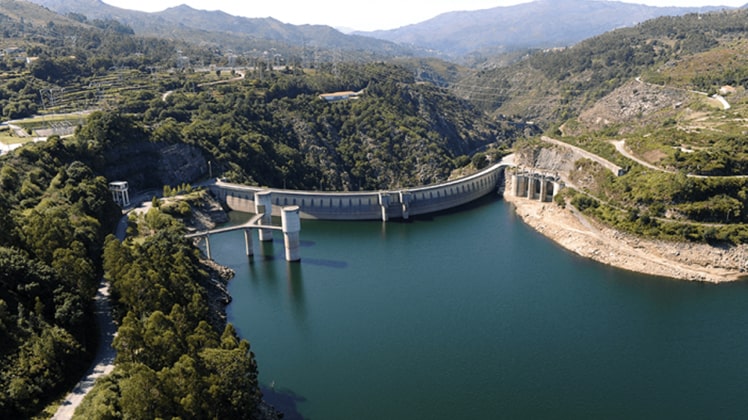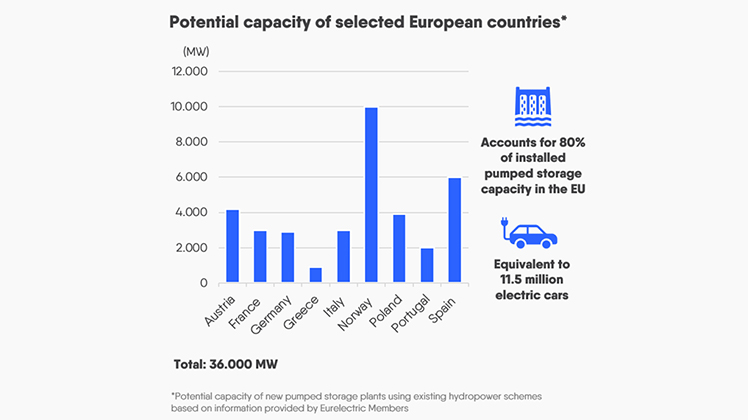“The way of water”: why Avatar had it right

Just like Avatar embraced the way of water and harnessed its power to win the final battle, so should Europe when fighting to win net zero.
When the sun doesn’t shine and the wind doesn’t blow, water keeps flowing. That’s right, water not only can be used to produce sustainable and renewable energy, but to also store energy and release it at times of need. And these times will be more and more frequent in Europe’s near future. As wind and solar keep kicking fossil fuels out of the mix, firm and flexible capacity as well as electricity storage will be increasingly needed to balance renewables’ variable generation and ensure security of supply. Hydropower can answer both needs shows Eurelectric’s report.
Being highly independent of imports of raw materials and requiring skilled labor or technological competence already available in Europe, hydropower is an attractive technology for EU’s quest for energy independence and resilient clean supply chains.
Big reservoirs and related run-of-river plants adapt their power generation to demand in the system, by storing water coming from natural water flows. At times of high energy demand, water is then released to activate a turbine and produce electricity. Looking at an average year, their flexible generation accounts for about 17% of EU's total electricity.
Overall, hydro represents 33% of the EU’s renewable energy sources today. While all types of hydropower are crucial to our energy system, one type stands out: pumped storage.
Pumping up pumped storage capacity
Providing more than 90% of the EU’s storage capacity today, pumped storage plants are by far the most efficient source of electricity storage. When excess electricity is available, water is pumped from a lower to an upper reservoir, only to be re-directed into turbines and converted back into electricity during high demand. These plants work with much higher efficiency compared to hydrogen and on a larger scale than batteries. In addition, they can be designed and built in a sustainable way at affordable costs.
Pumped storage must play a greater role in the decarbonisation of Europe’s power system. The best way to achieve such goal, beyond developing new hydro projects, is to upgrade existing flexible hydropower schemes into highly efficient pumped storage plants.
Reshaping hydropower plants is the least expensive investment option for generators which can capitalise on infrastructure synergies to reduce capital expenditures while maximising the output of existing facilities. In addition, these upgrades would have a minimal impact on the surrounding environment, therefore preserving the site’s habitats and biodiversity.
As much as 36,000 MW of renewable electricity could be delivered across Europe simply by upgrading existing reservoirs. This is equivalent to 80% of the EU’s pumped hydro storage capacity already in existence or 11.5 million electric vehicles, as shown below.

Several conversion projects are already underway in Europe, showing promising results in terms of higher efficiency, reduced outage, and lower risk, and improvements for nature. Austria, for instance, is developing the Lünerseewerk II project, a new pumped storage plant built on an existing water reservoir with a generation capacity of 1,000 MW and a potential pump capacity of 1,000 MW. In Portugal at Alto Lindoso, an old turbine is being replaced with a reversible unit able to generate 630 MW and pump 315 MW. Sweden, where hydropower already represents 40% of energy production, is also converting small hydro plants into pumped storae facilities to gain an addittional capacity of 720 MW, equal to 9% of Sweden’s total hydro production.
Making sure these projects become the norm across Europe requires creating the right incentives. A market that preserves short-term price signals to incentivise the dispatch of flexible hydroelectricity when it is needed most, is one of them.
Accelerating the deployment of pumped hydro storage also requires faster permitting procedures and a stable legislative environment that strengthens long-term visibility and investors confidence via technology-neutral voluntary support schemes.
Last but not least, upgrades of hydro plants should be conducted in synch with enviromentally mindful practices. There are many opportunity for improving hydro plants while preserving nature.
To know more about them stay tuned for our next report on “increasing hydro capacity and improving biodiversity”.
